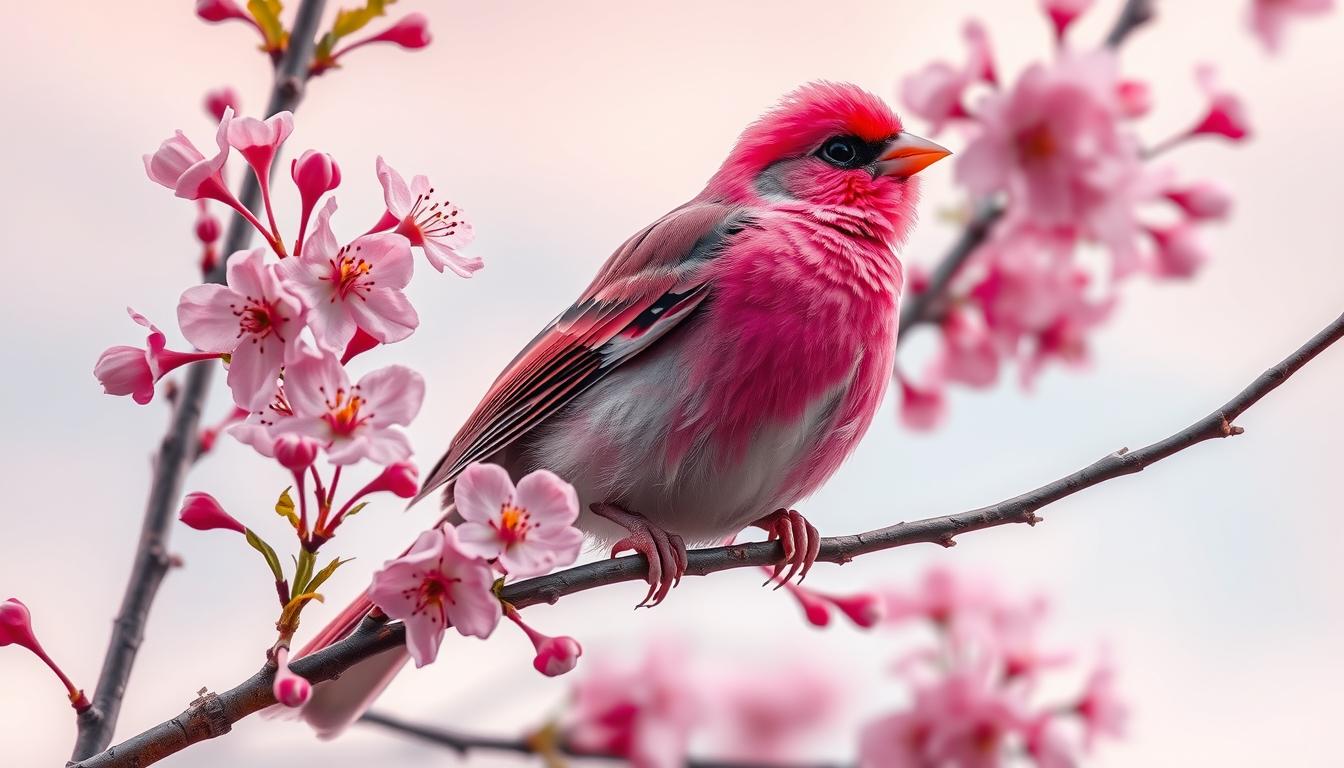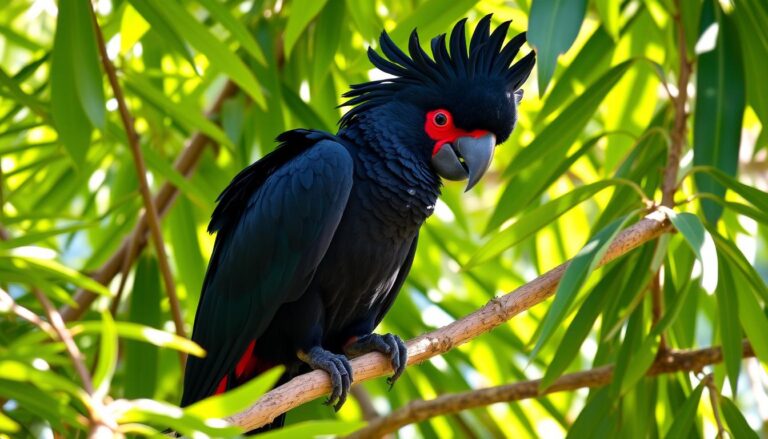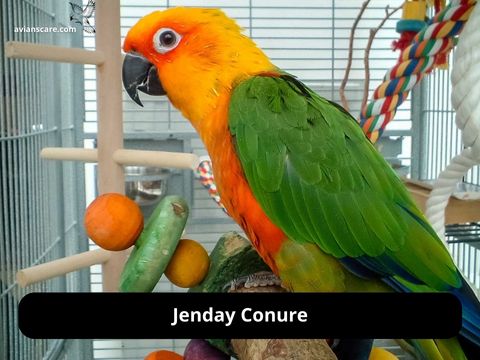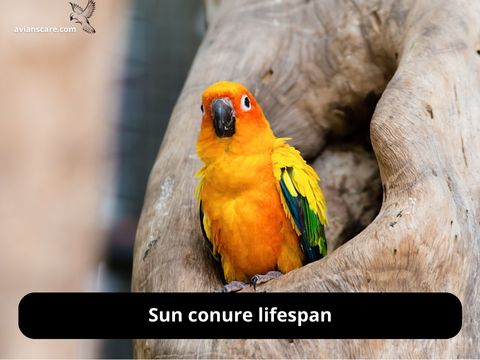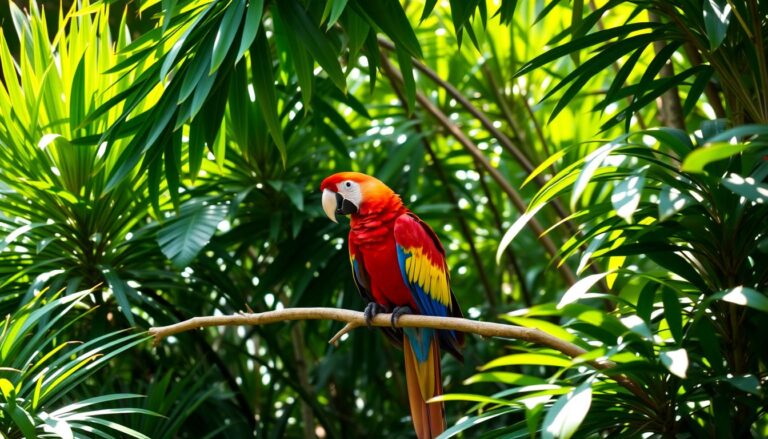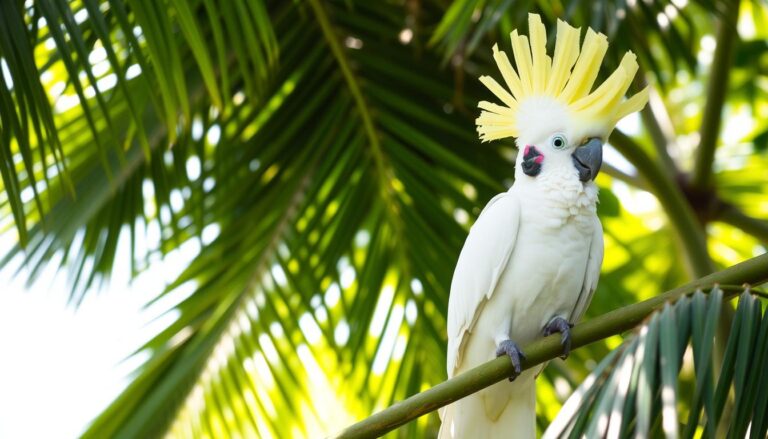Rose Finch Bird: Beautiful Songbird of Asia
In Asia’s lively landscapes, the rose finch bird shines brightly. It’s a beloved songbird known for its stunning looks and beautiful songs. Bird lovers and nature fans adore it. The rose finch bird is a true wonder of nature, with its unique features and important role in ecosystems.
Key Takeaways
- The rose finch bird is a stunning songbird species native to various regions of Asia.
- It is known for its vibrant pink plumage and captivating vocalizations.
- The rose finch plays an important role in the ecological balance of its natural habitats.
- This species is highly valued by bird enthusiasts and is a popular subject for birdwatching.
- Understanding the unique characteristics and behaviors of the rose finch can provide insights into the diverse avian world.
Introduction to the Rose Finch: Nature’s Pink Wonder
The rose finch is a vibrant bird in the finch family. It has striking pink feathers that catch the eye of bird lovers and nature fans. This bird is part of the Carpodacus genus, showing the beauty and variety in the finch family.
The rose finch stands out with its pink color. Males have a bright rose-red on their head, back, and chest. Females have a softer pinkish-brown color. They are small, about 5 to 6 inches long, adding charm to any place.
“The rose finch is a true gem, a feathered embodiment of nature’s vibrant pink palette.”
The rose finch is special in the finch family. They are known for their beautiful songs, social nature, and ability to live in different places. They can be found in the Himalayas and East Asia’s forests, showing their strength and flexibility.
As we learn more about the rose finch, we’ll see its physical traits, where it lives, and its interesting behaviors. This will show why it’s loved as a nature’s pink wonder.
Physical Characteristics of Rose Finch Bird
The rose finch is a beautiful songbird found in Asia. It has vibrant colors and unique markings. The male and female rose finches look very different, showing a clear sexual dimorphism.
Distinctive Color Patterns and Markings
The male rose finch has a stunning rose-pink color on its head, neck, and upper breast. This color contrasts with its black wings and tail and white wing patches. The female rose finch has a more muted look, with brown and beige colors. She has pinkish undertones on her face and breast.
Size and Body Structure
The rose finch is a small bird. It is 12-14 centimeters long and has a wingspan of 20-22 centimeters. Both males and females have a similar build, with a small beak perfect for eating seeds.
Sexual Dimorphism in Rose Finches
The difference in plumage between male and female rose finches is striking. This is a common trait in many bird species. The male’s bright colors help him attract mates and show dominance in the flock.
| Physical Trait | Male Rose Finch | Female Rose Finch |
|---|---|---|
| Head and Neck Color | Rose-pink | Brown with pinkish tinge |
| Wing and Tail Color | Black with white patches | Brown |
| Body Length | 12-14 cm | 12-14 cm |
| Wingspan | 20-22 cm | 20-22 cm |
The rose finch’s physical traits, like their colors, size, and sexual dimorphism, make them a stunning sight. They are a joy to watch in their natural habitats.
Natural Habitat and Distribution Range
The rose finch is a beautiful bird from Asia. It has pink feathers and loves different places to live. Its rose finch range covers many areas.
In the Himalayas, you can find the rose finch. It lives in forests and meadows. These places have lots of plants and different weather.
The rose finch also lives in Central Asia. It’s in Mongolia, Kazakhstan, and Russia. It likes forests, scrublands, and high places.
Some rose finches move down when it’s cold. But most stay in their homes all year. They are good at living in many places.
| Region | Habitat | Population Status |
|---|---|---|
| Himalayan Mountains | Forested areas, alpine meadows | Stable |
| Central Asia | Montane forests, scrublands, sub-alpine areas | Stable |
| Mongolia | Mountainous regions, open woodlands | Stable |
Rose Finch Behavior and Social Structure
The rose finch is a stunning bird found in Asia. It shows interesting social behaviors and a clear hierarchy in its groups. These finch birds have complex social lives, defend their territories, and enjoy various daily activities.
Flock Dynamics
Rose finches are very social, often gathering in small to medium groups. A dominant pair leads the group, with others following. Each bird has a role in keeping the flock together.
Territory and Defense
Rose finches fiercely protect their homes and food spots. During breeding, males defend their territory with aerial shows and loud calls. This keeps their area safe for raising their young.
Daily Activities
- Feeding: Rose finches spend a lot of time looking for seeds, grains, and berries together.
- Grooming: They take time to keep their bright feathers clean and shiny.
- Resting: They rest in shaded spots or high places during the day.
- Socializing: The finch bird sing, call, and play together, strengthening their bonds.
The rose finch’s social life, territorial defense, and daily activities make them a joy to watch. They are a favorite among bird watchers and nature lovers.
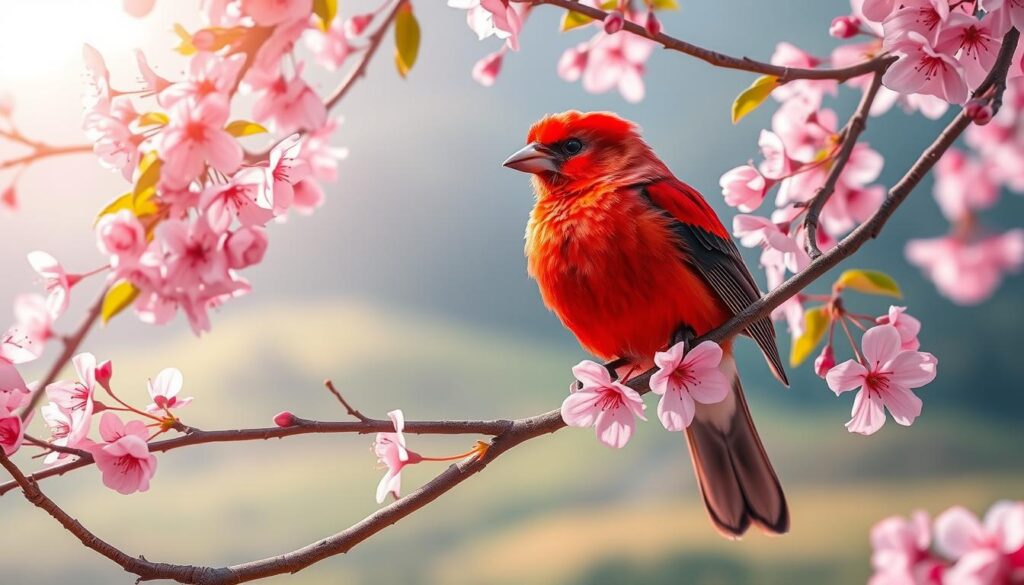
Melodious Songs and Vocalizations
The rose finch, a bird from Asia, is known for its beautiful songs. These birds can make many different sounds. Each sound has a purpose in their lives.
The melodic song of the rose finch is a key part of their life. Males sing these songs to attract mates and mark their territory. Their songs mix trills, whistles, and warbles, showing off their unique style.
Rose finches also use calls and vocalizations to talk to each other. They make sharp “tsip” calls for contact and alarm. For social chats and finding food, they use more complex “chatter” calls.
| Vocalization | Purpose |
|---|---|
| Melodic Song | Territorial defense, courtship, and mate attraction |
| “Tsip” Call | Contact and alarm |
| “Chatter” Call | Social interaction and foraging |
There are slight differences in the rose finch’s songs based on where they are. These small changes might help with their social and mating lives.
The rose finch songs and sounds show how well these birds have adapted. These finch bird facts highlight their beauty and complexity.
Breeding and Reproduction Patterns
The rose finch, a captivating songbird found across Asia, exhibits a fascinating array of breeding and reproduction behaviors. These delicate creatures showcase remarkable nesting habits, intricate courtship rituals, and dedicated parental care. All of these contribute to the continued survival of their vibrant species.
Nesting Habits
Rose finches construct their nests in various locations. They often choose sheltered spots within dense vegetation or small cavities in trees and shrubs. The female bird takes the lead in this meticulous process.
She weaves together a cozy cup-shaped structure using fine twigs, grasses, and soft plant materials. This carefully crafted nest serves as a secure haven for their precious eggs and hatchlings.
Egg Laying and Incubation
The rose finch female lays a clutch of 4 to 6 delicate, speckled eggs. This happens during the spring and summer months. The incubation period, where both the male and female finch bird take turns sitting on the eggs, lasts for approximately 12 to 14 days.
This dedicated parental care ensures the safe development of the nestlings. They will soon emerge as vibrant additions to the local finch bird facts population.
Parental Care
Once the eggs hatch, both the male and female rose finches work tirelessly to provide for their young. They take turns feeding the nestlings a diet of seeds, insects, and other nutritious morsels. This ensures their rapid growth and healthy development.
The fledglings remain under the watchful eyes of their parents for several weeks. They learn essential survival skills before ultimately taking flight and establishing their own territories.
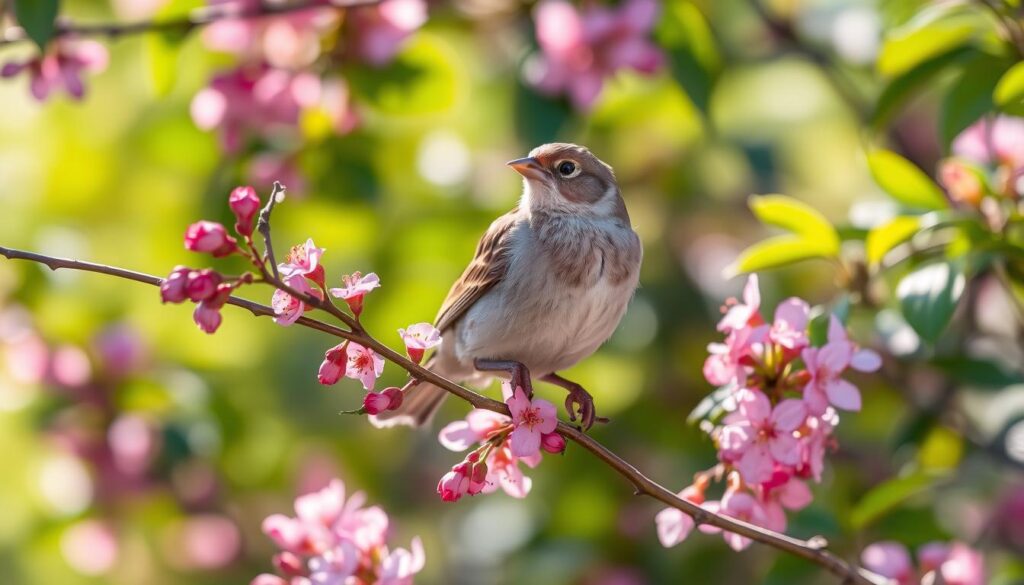
The breeding and reproduction patterns of the rose finch are a testament to the remarkable adaptability and resilience of this species. From their intricate nesting behaviors to their dedicated parental care, these captivating birds continue to captivate and inspire birdwatchers and naturalists alike.
Diet and Feeding Habits
The rose finch, a vibrant songbird from Asia, eats a wide range of foods. They mainly eat seeds, using different seeds all year round.
In the breeding season, they add small insects, spiders, and other tiny creatures to their diet. This gives them the protein and nutrients they need for their young. They find these extra foods by searching through leaves and tree bark.
Preferred Food Sources
- A variety of grass and weed seeds
- Berries and small fruits
- Buds and nectar from flowers
- Insects, such as beetles, caterpillars, and spiders
The rose finch can handle changes in food availability well. Its strong beak can even crack open hard seeds. This skill helps them live in many different places, from forests to grasslands.
The rose finch also helps the ecosystem by spreading seeds. This helps keep the local plants in balance.
“The rose finch’s diverse diet and adaptable feeding behaviors are a testament to its resilience and ability to thrive in various environments.”
Rose Finch as a Pet Bird
The rose finch is a popular pet bird with its bright pink colors and sweet songs. Before getting one, it’s important to know about their special needs. This includes the right home, food, and health care.
Housing Requirements
Rose finches need big, airy cages or aviaries for flying and perching. A cage of at least 24 inches by 24 inches by 24 inches is best. They also need different-sized perches and hiding spots, like plants, to feel safe.
Dietary Needs in Captivity
In the wild, rose finches eat many seeds, grains, and insects. For them to stay healthy in captivity, a balanced diet is key. A good seed mix, fresh fruits, veggies, and live insects are important. Always have clean water ready for them.
Health Care Considerations
Rose finches need regular vet visits to stay healthy. They can get sick with breathing problems, feather issues, and stomach troubles. Owners must be ready to take care of their health and prevent sickness.
The cost of owning a rose finch goes beyond the initial price. You’ll need to spend on their home, food, and vet visits. Before getting a rose finch, make sure you can meet their needs.
“Keeping a rose finch as a pet is a big commitment. It requires a lot of care and understanding of their special needs. With the right care, these birds can add beauty and joy to your home.”
Cultural Significance and Symbolism
The rose finch bird has a special place in many Asian cultures. These colorful songbirds are deeply rooted in traditions, folklore, and art. They show their lasting appeal and symbolic value.
In Asian cultures, the rose finch is admired for its beautiful feathers. These are seen as symbols of beauty, grace, and new beginnings. The finch bird facts make them a favorite in traditional art, like paintings and textiles. They also appear in literature and poetry, showing their importance as symbols of inspiration.
The rose finch is also seen as lucky in some beliefs. In some places, they are thought to bring good fortune, wealth, and peace. Their songs are seen as signs of spring, welcoming a new season.
“The rose finch’s delicate dance upon the breeze embodies the very essence of nature’s beauty and renewal.”
The rose finch bird means more than just its looks. These birds have captured the hearts and minds of people in Asia and worldwide.
Conservation Status and Threats
The rose finch, a vibrant songbird from Asia, is facing serious threats. Its habitat and population are under danger. It’s important to know about these threats and how we can protect it.
Current Population Trends
The International Union for Conservation of Nature (IUCN) says the rose finch population is going down. They have listed it as Near Threatened. This means it could be in danger soon if things don’t change.
Protection Measures
- Habitat Conservation: Work is being done to save the rose finch’s homes, like forests and grasslands.
- Regulatory Measures: Laws are being made to stop the capture and trade of rose finches.
- Research and Monitoring: Scientists are studying the rose finch to find ways to help it.
- Awareness and Education: Programs are teaching people why the rose finch is important and how to help it.
Even with these efforts, the rose finch range and numbers are still at risk. Threats like habitat loss, climate change, and illegal trapping are big problems. We need everyone to work together to save this beautiful finch bird facts.
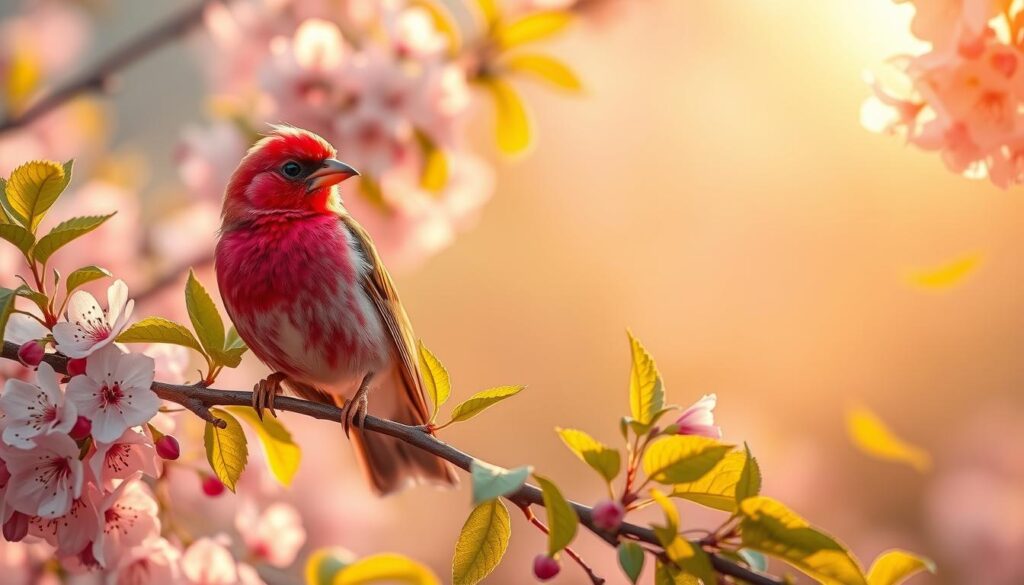
Species Variations and Subspecies
The rose finch, known as Carpodacus roseus, is a stunning bird found in Asia. It has a unique pink color, but different subspecies show slight changes in looks and behavior.
The Carpodacus roseus roseatus is well-known. It lives from the Himalayas to central Asia. These birds have a brighter rose finch pink on their heads, backs, and chests. They really stand out.
- The Carpodacus roseus saturatus lives in China and Tibet’s mountains. They have a darker, more even pink color. There’s less difference between their head and body.
- The Carpodacus roseus kubanensis is in the Caucasus Mountains. It’s smaller and has more delicate features than other rose finches.
Scientists are still learning about the rose finch family. They’re finding out about their genetic diversity and how they evolved. This research shows us how special these birds are.
“The rose finch is a true symbol of the natural beauty and diversity found across the Asian continent.”
Interesting Facts About Rose Finches
Rose finch birds are not just beautiful; they have many interesting traits. These traits make them stand out in the finch family. Their unique adaptations and behaviors are fascinating to bird lovers.
Unique Adaptations
Rose finches have a special beak that helps them eat tough seeds and grains. Their strong, cone-shaped bills are perfect for their diet. This lets them live well in their Asian habitats.
Their bright colors do more than just attract mates. They also help the birds blend into their pink surroundings.
Remarkable Behaviors
- Rose finches are famous for their flocking behavior. They gather in big groups for safety and to find food together.
- These birds also have cool courtship rituals. Males show off their colors and fly in fancy ways to win over females.
- Interestingly, rose finches “dust” themselves in fine soil or sand. This keeps their feathers clean and fights off bugs.
As scientists learn more about the rose finch bird and its finch bird facts, we’ll discover even more amazing things. This will make them even more special in the world of birds.
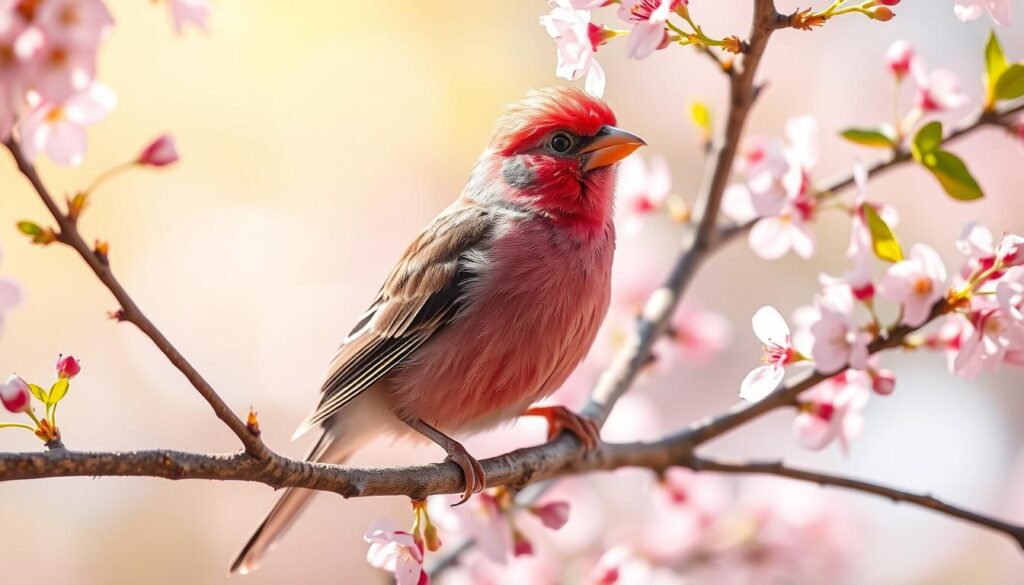
Photography and Bird Watching Tips
Catching the rose finch bird in its natural setting is a joy for bird lovers and photographers. Here are some tips to enhance your experience:
Responsible Birdwatching
- Keep a safe distance to not scare the birds away.
- Use binoculars or a scope for a closer look without getting too close.
- Be quiet and still to avoid startling the birds.
- Don’t harm the environment by stepping on plants or leaving trash.
Photography Techniques
- Use a long lens to capture the rose finch pink details.
- Shoot during the golden hours for the best light.
- Use a tripod for steady, clear photos.
- Try different views to show the bird’s actions and interactions.
| Recommended Camera Equipment | Ideal Settings |
|---|---|
| DSLR camera with a telephoto lens (200mm or longer) |
|
With patience and these tips, you can take amazing photos and make lasting memories of the rose finch bird.
Conclusion
The rose finch bird is a true marvel of nature. It has captivating pink hues and melodious songs. These finches play a vital role in the ecosystem, serving as important pollinators.
They contribute to the overall biodiversity of their natural habitats across Asia. Through our journey, we have gained a deeper appreciation for the rose finch.
We’ve learned about their physical characteristics, behavioral patterns, and cultural significance. From their distinct color variations to their intricate social dynamics, these birds have captured the hearts and imaginations of many.
As we look to the future, continued research and conservation efforts are crucial. They will help ensure the protection and preservation of the rose finch species. By understanding their ecological needs and the threats they face, we can work to safeguard these beautiful songbirds.
This will help maintain the delicate balance of the natural world they inhabit. The rose finch serves as a poignant reminder of the wonders of our planet. It shows us the importance of preserving its rich avian diversity.

